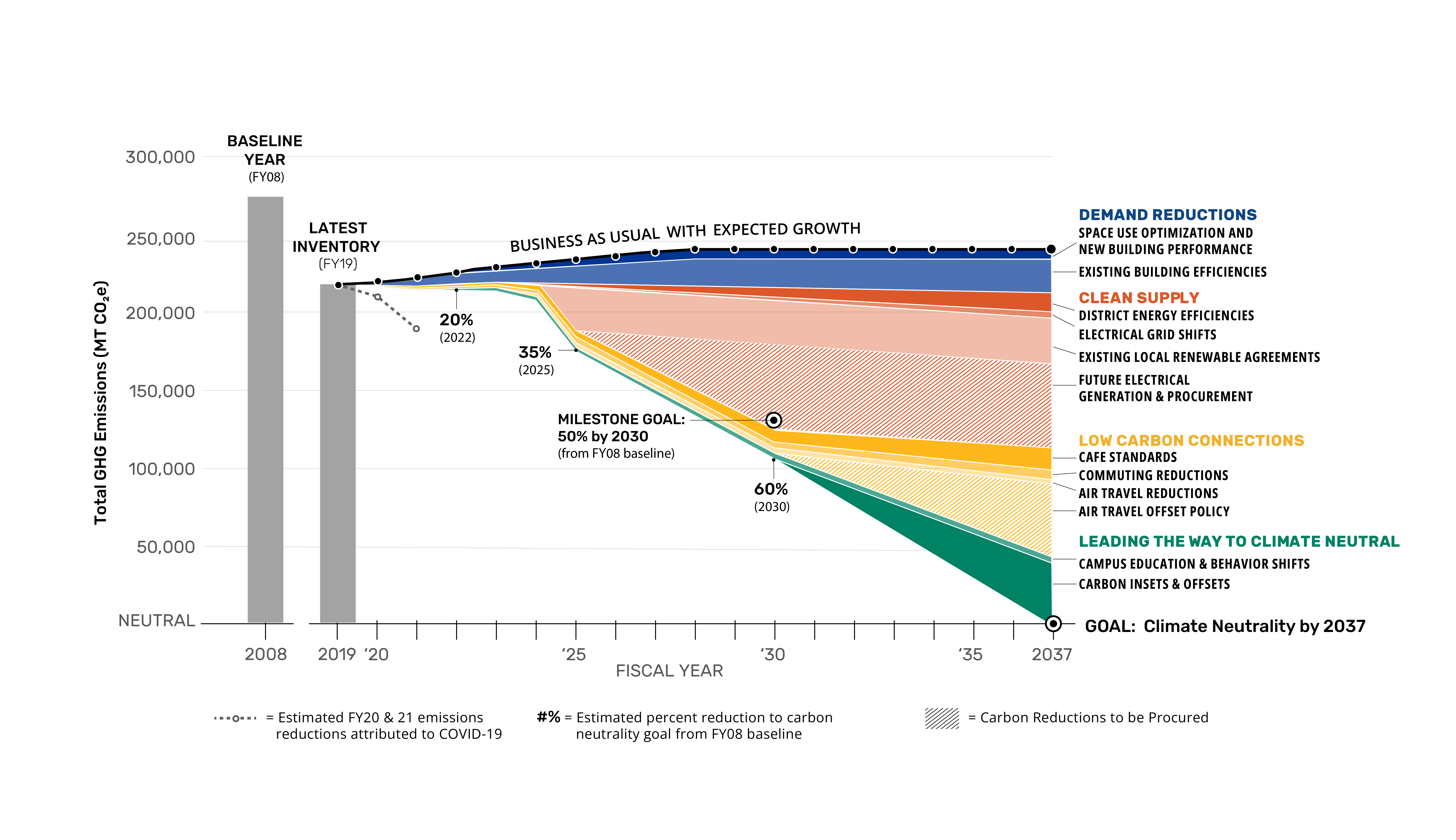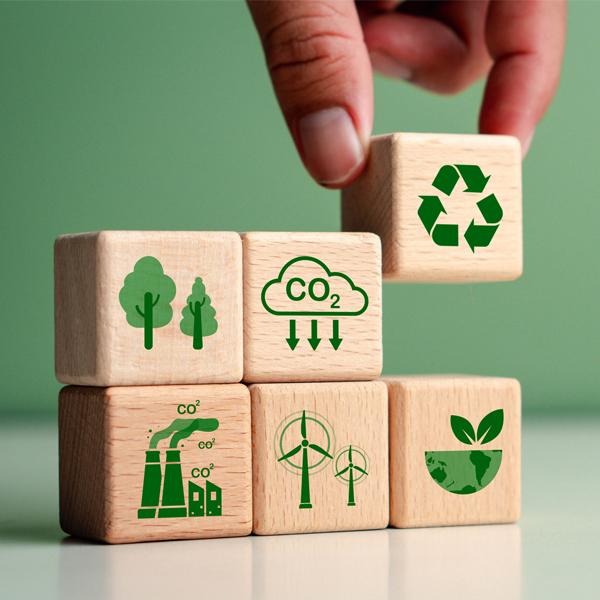A greenhouse gas (GHG) or “carbon” offset is a unit of carbon dioxide-equivalent (CO2e) that is reduced, avoided, or sequestered to compensate for emissions occurring elsewhere (WRI report).
Though the carbon offset market is voluntary, offsets are a globally traded commodity.
Carbon offsets can be generated via several strategies, including tree planting, efficiency efforts, renewable energy, methane capture, regenerative agriculture, and other approaches. Traditionally, carbon offsets are procured from external entities, are independently verified, and externally achieved.
Carbon offsets are a required piece to reach carbon neutrality by 2037 – and we can use that opportunity to reflect our values and create a cascade of mission-related, environmental, equitable, and economically resilient solutions. Depending on outcomes, the University can choose to focus on projects that offer benefits beyond carbon (i.e., community, educational, health, equity, resilience, and environmental); the Carbon Commitment Committee is already investigating opportunities of this type. An increasing number of companies in Pitt’s existing and future supply chain already purchase carbon offsets of their own.
See page 40 of the Climate Action Plan.




